Country Report: Austria
As the global reputation of neighboring pharma giants Switzerland and Germany continues to soar, Austria too is on the move, with the ambition of becoming a real driver and shaper of global medical innovation rather than merely just a link in the chain.
This sponsored supplement was produced by Focus Reports
Project Director: Carla Verdera Mateu, Chiraz Bensemmane, Crystelle Coury
Senior Editor: Louis Haynes
Project Coordinator: Matthew Fsadni
Project Assistants: Alan Le Roux, Carole-Anne Bruneau
Project Publisher: Mariuca Georgescu
Editor: Patrick Burton
Graphic Assistance: Miriam León, Laura Breitfeld
Cover © Miriam León
For exclusive interviews and more info, please log ontowww.pharmaboardroom.comor write tocontact@focusreports.net
A Hidden Champion
Austria's glorious history is inexorable. Vienna bursts forth with classical architecture and an abundance of double-headed eagles dot the capital serving as a constant reminder of the once mighty Austro-Hungarian Empire. Now, as the global reputation of neighboring pharma giants, Switzerland and Germany, continues to soar, Austria too is on the move, with the ambition of becoming a real driver and shaper of global medical innovation rather than merely just a link in the chain.
Nowadays a prospering local life sciences industry employs around 63,000 people and counts some 823 companies active in the combined fi elds of biotechnology, pharmaceuticals and medical devices. This contributes a full 9.6 billion EUR gross added value to the country's wealth, around 2.8 percent of national GDP, highlighting the economic value of a thriving life science ecosystem. Moreover, the government's newly unveiled strategy for research, development and innovation aims even higher: "to render Austria a tier-one innovation pioneer within the European Union and to raise the share of R&D investment to as much as 3.76% of GDP by 2020."

At the centerpiece of this thrust lies the capital, Vienna. "Austria has always enjoyed a strong scientifi c tradition with 4 Nobel prize winners since the beginning of the 20th century, but it is really in the last 25 years that life sciences and ICT have become the strongholds of the Viennese economy," recalls Gerhard Hirczi, managing director of the Vienna Business Agency. "We have matured into a medical biotech city and pioneer in niche areas such as oncology, immunotherapy, plasma and disease modifying allergy therapeutics where there are companies based here operating right at the bleeding-edge of scientific discovery."
“There can be no denying that Vienna today represents a global pharmaceutical players’ darling. Each and every one of the global top-10 ranked companies in annual sales maintains a strong presence in the Austrian capital. The same goes for the top 5 worldwide medical device developers,” points out Peter Halwachs, managing director of LISAVienna. Indeed many of these multinationals run not only sales and distribution unities but also have established healthy R&D footprints as well.
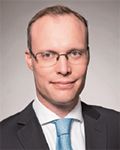
Alexander Biach, chairman, Hauptverband (Main Association of Austrian Social Security Institutions)
According to Thomson Reuter’s Sciencewatch the relative impact of clinical medicine in Austria is 58 percent above the world average. “We have been witnessing significant investments in clinical trials. Last year alone, we saw some 5000 patients taking part in Austrian trials with an especially high presence in certain specific therapeutic areas such oncology,” confirms Jan Oliver Huber, secretary general of the Association of the Austrian Pharmaceutical Industry (PHARMIG).

Jan Oliver Huber, secretary general, Association of the Austrian Pharmaceutical Industry (PHARMIG)
Nor should it been forgotten that Vienna today constitutes one of most preferred European meeting spots for the international life sciences community with more than 150 medical conventions and congresses taking place every year involving the participation of literally thousands of physicians, clinicians and medical experts.
R&D FRIENDLY
Much of the country’s innovative fizz in medical science has its roots in the strong bonds forged between academia and industry when, in 1991, Austria became home to the world-renowned Vienna Biocenter (VBC). “The VBC today proudly encompasses four leading academic research institutions – the Research Institute of Molecular Pathology (IMP), the Institute of Molecular Biotechnology (IMBA), the Gregor Mendel Institute of Molecular Plant Biology (GMI) and the Max F. Perutz Laboratories (MFPL) – which, in total, play host to as many as 86 different research groups,” enthuses VBC chairman, Harald Isemann.
The numbers are certainly intriguing. Vienna boasts almost 200,000 students making it the largest university city not only across the entire CEE, but also anywhere in the German speaking world. Impressively 36,000 of these students study in life science related meaning that approximately every 6th student encountered has a life-sciences background
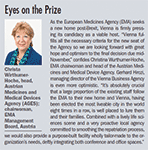
What’s more, the Austrian government has systematically and unerringly backed R&D activity through a welter of research grants. “Initial incentives for life science firms to invest in R&D started with a rebate of ten percent and this ratio been increased over the years so that on the 1st of January 2018 this will be raised to an impressive 14 percent,” points out Phillip von Lattorff, country managing director of Boehringer Ingelheim’s Regional Centre Vienna (RCV).
These initiatives have, in turn, spurred on the proliferation of countless innovation-orientated SMEs and a healthy domestic biotech scene that has really helped Austria to consolidate its position on the global life sciences map. “Vienna housed around 35 companies in life science R&D back in the 1990s and now we have 160 such companies and are witnessing a growth rate of 6-10 new players ever year,” laughs Peter Halwachs.
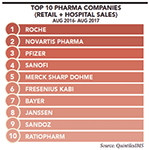
A MANUFACTURING POWERHOUSE IN THE MAKING
Where Austria most definitely does stand apart, is for its prowess in pharmaceutical manufacturing. The country distinguishes itself within Central Europe for the profusion and quality of its pharmaceutical activity and has therefore been able to attract many large multinationals to position their production capabilities there. “Austria is world reputed to be a stable, reliable, predictable country, both economically and politically, allowing operations to always run smoothly and that counts for a lot,” explains Karl-Heinz Hofbauer, site lead of Shire’s Vienna production.
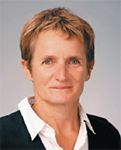
Barbara Rangetiner, general manager, Octapharma
This stable setting has thus allowed Shire to maintain significant operations after the company’s 32 billion USD acquisition of Baxalta, taking over the Vienna production site and seven nationwide plasma plants that distribute to over 100 countries. The company has now formulated “a plan to produce additional products in Austria, from the company’s existing portfolio that are manufactured at other sites, and equally from the global pipeline that is aided by the company’s large R&D investments,” reveals Hofbauer.
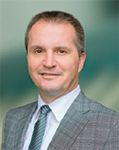
Josef Weinberger, corporate quality and compliance officer, Octapharma
The transition of medical science towards biologics provides yet another departure point for local manufacturing to take off, as multinationals search for high quality and consistent production bases that can appropriately handle increasingly sensitive formulations. Austria’s entry into biologics production has been driven for decades by market leader, Novartis, which has committed to investing as much as one billion USD in Austrian manufacturing plants between 2010 and 2020. This decision, according to country president, Ard van der Meij, derives from the fact that “pharmaceutical production is clearly a process that is not easy to replicate and multiply into several locations” and the company has “been able to build on our long history and experience in penicillin production to now move into biologics; a hugely complex process.” Thus far the company maintains 3 sites in Western Austria, stimulated by a decision on the part of the global management board for the company to be responsible for their own biosimilar production, rather than resorting to external contract manufacturing organizations (CMOs).

Manuel Reiberg, former president, Association of the Research & Development based Pharmaceutical Industry in Austria (FOPI)
The largest announcement in recent years has been Boehringer Ingelheim (BI)’s commitment to build an 820 million USD biopharmaceutical plant in the heart of Vienna to be completed in 2021, the largest single investment in the German company’s history. “Vienna thus far has ticked all the boxes, and we have shown the capability to build at the same speed and cost as anywhere else, with exactly the same commitment from the local and state government as you would find in Germany,” explains Philipp von Lattorff, managing director of BI’s regional center Vienna.
Yet another actor making big-ticket investments in bolstering their local manufacturing footprint is Swiss plasma pioneer, Octapharma. “To give you a sense of the Austrian affiliate’s strategic relevance and importance, we possess a staff of 1,068, which constitutes around one sixth of Octapharma’s global workforce. Moreover some one third of our manufacturing personnel are based out of Vienna,” proudly reveals Josef Weinberger of the global management board. Indeed the Austrian capital actually constitutes the site of the firm’s first ever production facility and very much remains a flagship asset today.
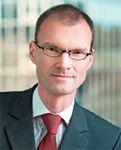
Karl Heinz Hofbauer, managing director & site lead Vienna, Shire
“Over the years we have continued to invest heavily in expanding this facility and ensuring that our capabilities keep pace with scientific advancements in plasma-derived products. The original complex has been upgraded, latest-generation production and laboratory technologies have been installed and entire new buildings have been constructed. The plant‘s annual fractionation capacity, for example, has increased seven-fold since 1989 and the size of the premises has more than tripled to 80,000 m², some 22,000 m² of which were purchased only last year,” details Barbara Rangetiner, general manager of pharmaceutical production.
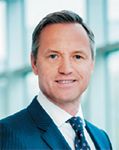
Robin Rumler, country manager, Pfizer
Number one pull-factor seems to be the supporting ecosystem and the ready availability of top-notch talent. “The human resource pool in Vienna is really well matched to the sorts of technical functions that our business requires. The Austrian education system is another plus factor with its very strong mid-level colleges where students tend to be able to develop their technical abilities. The local work ethic is also an invaluable asset. Not only do Austrians tend to be well educated, but the national mentality is to be ambitious, to take the initiative and to have a very high work rate in which you take great pride in the activity you are carrying out. This is perfect for a family-run, versatile, entrepreneurial outfit like Octapharma where employees are empowered to be creative and take responsibility,” recounts Rangetiner.
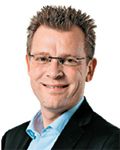
Mogens Guldberg, general manager, Novo Nordisk
PUBLIC HEALTH: GREAT EXPECTATIONS
On the healthcare side of the equation, Austria has much to be proud about as well. World-class care has long been an expectation of the Austrian population. “OECD studies demonstrate that Austrians enjoy the highest public health coverage of citizens of any country in Europe and we are also one of the countries with the lowest unmet medical needs which means that residents have access to the best medical benefits by simply presenting their electronic card,” affirms Alexander Biach, freshly elected chairman of the Hauptverband, main social security apparatus. “Moreover the rate of trust in the country’s national health system is one of the highest in Europe: If someone has an accident or falls ill abroad, they always want to come back to be treated in Austria,” he elaborates.

One big problem on the horizon, however, relates to the financing of such a well-loved system in an era of rising drug costs and surging demand for treatment as life expectancies are prolonged. Ominously, with 11.1 percent of the nation’s annual GDP expenditure dedicated to healthcare, Austria already ranks as one of Europe’s highest public health spenders.
Biach, himself, is committed to cutting the fat and crafting what he calls an “efficient, fast, uncomplicated, equitable, modern insurance system that offers real value for money” and intends to achieve this through a welter of reforms touching upon coordinated tendering, harmonized procurement and better prescribing behaviors that prioritize use of generics and biosimilars.
STRUCTURAL COMPLICATIONS
In Austria, the ability for products to gain market access is directly associated to the perennial wrestling match between rising innovative drug prices and healthcare budgets, a common dynamic in most developed markets. Despite the country’s reputation for traditionally being well disposed to facilitating the access and reimbursement of latest generation therapies, Mogens Guldberg, country manager of Novo Nordisk perceives certain complications arising from a tendency towards a decentralization of decision-making with regards to payers and sick funds, which in turn risks jeopardizing the long-term financial sustainability of the nation’s healthcare apparatus. “Austria has a defined political structure with a long history based around the nine federal states being each individually given a health care budget. This can create a lack of fund allocation transparency in the system, not allowing us to fully understand how innovative drugs can help establish a more cost-efficient system,” he warns.
“Most of the fundamentals are in place and, as the fourth largest European country in terms of GDP per capita, we should be able to properly and effectively reward innovation, however, the structural set up of our healthcare system is not helping us…all too often, decision-making is being conducted in silos and thus there is a lack of a single holistic vision,” laments Clemens Schodl, country manager of Gilead.
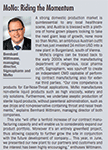
One underlying by-product of an inappropriately structured public healthcare system is the lack of transparency that exists within the two-tier finance system relating to primary and hospital care. “What I notice is that a lot of resources seem to be channeled towards the wrong sorts of areas,” perceives Wolfgang Herrer, Chiesi regional manager for Central and Eastern Europe. “For instance, hospitals are managed at the regional level. Every regional politician wants to invest heavily in hospitals; therefore, Austria has an oversupply of hospitals and this area of healthcare is inefficient. At the same time, Austria lacks centers of excellence for specific therapeutic areas, that would contribute to decreased spending in the sector,” he elaborates.
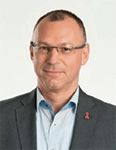
Clemens Schödl, general manager, Gilead
Robin Rumler, country manager of Pfizer very much concurs. “In Austria, there are as many as 22 different sick funds. From my perspective, this is an overly complicated system involving far too many different actors. Steps should be taken to centralize and rationalize these funding structures so we can gain greater understanding about how exactly this money is being spent… Right now, there are some 7.6 hospital beds per 1,000 inhabitants, which is an unnecessarily high ratio. We would surely do much better to remove departments in hospitals that are not underutilized and instead create specialist centers in the areas of oncology, cardiovascular diseases, pain and surgery. This would not only generate considerable cost saving, but also deliver patients an enhanced quality of care,” he reasons.

Peter Wimmer, country manager, Angelini
In short, many pharma industry stakeholders feel that their businesses are being unjustly subjected to cost cutting whereas much more effective savings could be made elsewhere. “Austrian pharmaceutical and medication spending is only 12 percent of the overall healthcare expenditure. There are a large number of other areas where the government could leverage savings such as the domain covering ambulances and hospitals, which is, at present, being run in an extremely cost inefficient manner,” argues Manuel Reiberg, president of the Association of the Research and Development based Pharmaceutical Industry in Austria (FOPI).

Rudolf Wessely, CEO and founder, Gynial
SUSTAINABILITY AND ACCESS: A BALANCING ACT
Herwig Ostermann, executive director of the Austrian Public Health Institute, a neutral voice in the space between the government and industry, is keen to stress Austria’s comparatively friendly approach to easing market access for innovative therapies. “When devising the budget cap, [the launch of innovative drugs] is most definitely taken into account, and technological progress has been incorporated in the original financing model,” he notes. Yet, despite Austrian budget healthcare caps being readjusted every four years, Ostermann admits concern that, “highly expensive therapies, as observed in recent years, pose challenges to the fiscal sustainability of the entire system.”

Emblematic of the prevailing challenges of financing latest generation innovations was Gilead’s launch of the revolutionary, but expensive HCV drug, Sovaldi® resulting in the local pharma industry having to collectively pay a EUR 125 million solidarity payment back to the Austrian government in 2015. Meanwhile many in the industry are unhappy at recent price slashing reforms as the social security authorities struggle to keep the reimbursement budgets in the black. “Unfortunately recent reforms have included severe cost containment measures such as the introduction of fixed price bands for generics so that new drugs entering the market cannot be priced 30 percent more than the cheapest product, notes Reiberg.
PHARMIG’s Jan Oliver Huber sheds light on the prevailing pricing scenario. “Austrian product prices are based on the European average of 28 nations spread across the entire continent. More prosperous member states are part of the first launch wave, but the price of a product continues to be reviewed subsequent to placement on the reimbursement list, generally at 18 month intervals and, as less affluent member states are incorporated into the calculation, the average price tends to get driven down at each new review,” he recounts. “Our worry would be that companies get fed up with these diminishing returns and instead start turning to alternative markets to conduct their drug launches.”
To compliment the 2015 industry solidarity payment, reimbursement authorities implemented a hotly discussed reimbursement box-system whereby drugs are classified in “boxes” and their innovation value evaluated based on a comparison to drugs on the market. Robert Sauermann, head of the Department of Pharmaceutical Affairs of the Hauptverband, is open to discussing sustainable pricing “just so as long as [industry] can provide sufficient evidence to back up their therapeutic and financial claims.”
This system requires companies to attack the market and attain access deploying differing methods. Peter-Karl Schwarz, general manager of LEO Pharma claims to be very much on-board with the system: “Our interactions with the reimbursement authority have been pretty constructive.” His team has proved able to gain first wave status in LEO Pharma’s global launches because “they have been successful in providing real scientific evidence on how we benefit our patients over and above improved clinical efficiency through increased adherence and compliance for long term treatment.” “We are really differentiating ourselves from our competition with our holistic approach that is very patient centric and are reaping the rewards in reimbursement decision making,” he reveals.
Other companies in other therapeutic areas, however, find it rather less easy to secure automatic reimbursement in a climate of increasing cost control and so have resorted to hybrid strategies to better assert themselves within the market. Peter Wimmer, country manager of Angelini Austria and Germany utilizes “a three-pillar system; Rx, OTC and private business. We are able to manage the dynamics between the areas by establishing partnerships.” This stable approach has allowed the company to gain a foothold in Austria, and are now conducting German operations from the Vienna offices.
WELCOMING IN BIOSIMILARS
One approach to curbing rising innovative healthcare costs has been to open the doors to an influx of generics and biosimilars. On April 1st, 2017 a new regulation was introduced to differentiate these two cost-efficient treatments, building on the 4 percent biopharmaceutical volume growth Austria experienced in 2016. Country president of Novartis Group Austria, Ard van der Meij sees this as a positive step forward because he believes that “the pricing model for biosimilars was initially too aggressive,” leading to many companies questioning whether a launch in Austria was financially viable. “Biosimilars are at the infancy stage and, as a community, all stakeholders have a responsibility to adapt to the evolution of the market so that we can better relieve stress on the entire healthcare budget,” he declares.
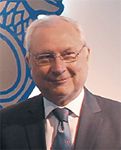
Karl Peter Schwarz, general manager, LEO Pharma
This mirrors the assessment of Sabine Möritz-Kaisergruber, co-founder of the Biosimilars Association and CEO of Astro Pharma which, in partnership with Hospira, is notable for having become the second firm to have managed to launch a biosimilar on the local market. “Previously, biosimilars more or less, fell under the same basket of regulations as generics so if you were not the first or second biosimilar on the market, there was really no clear incentive to be present in Austria at all,” she explains.
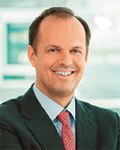
Philipp von Lattorff, country manager, Boehringer Ingelheim regional center Vienna
“As it stands, the latest reform now places Austria more in line with other European countries in allowing companies to launch biosimilars and will be welcome news to the industry,” analyses Martin Spatz, country manager of QuintilesIMS.

Ard van de Meij, country president, Novartis Group
Indeed. “Looking at the originator drugs coming off patent and what effects biosimilars coming into the market will have on the public health landscape. The numbers show that within the next five years, the Austrian healthcare system will generate savings to the tune of 300 million EUR (352 million USD),”reaffirms Möritz-Kaisergruber.
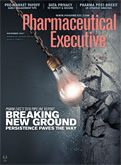
Country Report: United Arab Emirates
March 1st 2020With an estimated annual growth rate of 10%, the Middle East is now consistently outpacing traditionally sought-after “pharmerging” heavyweights such as China and Brazil. The United Arab Emirates is at the center of this newfound momentum-asserting its own credentials as a prospective destination for big-ticket foreign investment in healthcare.